A research scholar, during his experiment came across an aliphatic hydrocarbon 'X'. In the process of identification of 'X' he passed 'X' through alka-: line KMnO4. The solution became colourless. He found out the vapour density of the compound to be 34. Identify X and its succeeding hornologue 'Y' and also position isomers of straight chain ismoers.
Molecular mass of x is 68 . It may be alkane or alkyne 
But it is impossible.
Succeeding homogolue Y is C6H8 (hexyne) Position isomers of X are 1-Pentyne, 2-Pentyne. Position iso-mers of Y are 1 Hexyne, 2 Hexyne and 3 Hexyne.
Topper's Solved these Questions
- Organic ChemistryBOOK - PEARSON IIT JEE FOUNDATIONCHAPTER - Organic ChemistryEXERCISE - Level 3
9 Videos
- Organic ChemistryBOOK - PEARSON IIT JEE FOUNDATIONCHAPTER - Organic ChemistryEXERCISE - Level 1
39 Videos
- NATURE OF MATTER BOOK - PEARSON IIT JEE FOUNDATIONCHAPTER - NATURE OF MATTER EXERCISE - LEVEL 3
10 Videos
- PERIODIC CLASSIFICATION OF ELEMENTSBOOK - PEARSON IIT JEE FOUNDATIONCHAPTER - PERIODIC CLASSIFICATION OF ELEMENTSEXERCISE - Level 3
10 Videos
Similar Questions
The vapour density of an unsaturated aliphatic : hydrocarbon 'X' is 34. Write the structural formula of X and its succeeding homologue Y Also write the position isomers of X and Y.
View SolutionThe existence of negatively charged particle in an atom was shown by J.J. Thomson as a result of the studies of the passage of electricity through gases at extremely low pressure known as discharge tube experiments. When a high voltage of the order of 10,000 volts or more was impressed across the electrodes, some sort of invisible rays moved from the negative electrode to the positive electrode these rays are called as cathode rays.
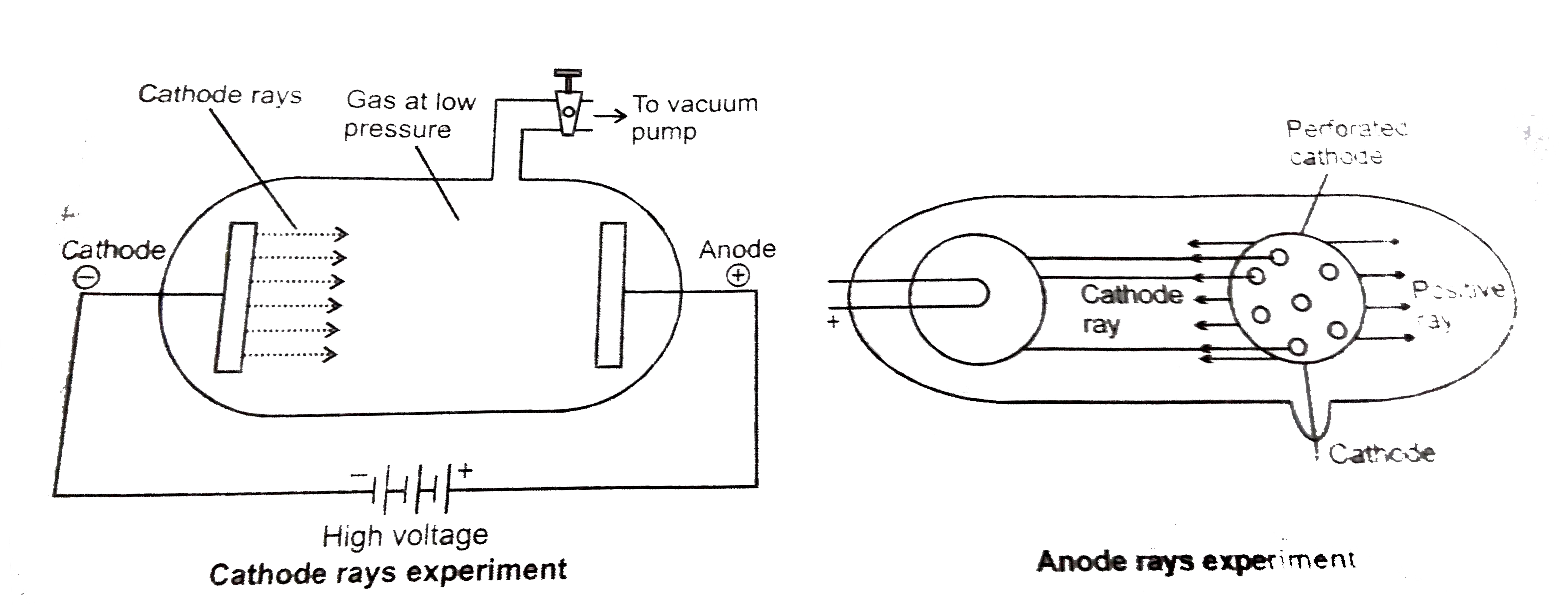
Cathode rays travel in straight path in absence of electrical and magnetic field . Cathode rays consist of material part and charged particles? Cathode rays produce X-rays and light is emitted when they strike on ZnS screen. Cathode rays penetrate through thin sheets of aluminium and other metals . They affect the photogenic plate and passes heating effect when they strike on metal foil. The raito of charge to mass i.e charge/mass is same for all the cathode rays irrespective of the gas used in the tube.
The existence of positively charged particle in an atom was shown be E. Goldstein. He repeated the same discharge tube experiments by using a perforated cathode. It was observed that when a high potential difference was applied between the electrodes, not only cathode rays were produced but also a new type of rays were produced simultaneoulsy from anode moving towards cathode and passes through the holes or canal of the cathode. These termed as canal rays or anode rays.
These rays travel in straight lines and consists of positively charged particles. These rays have kinetic energy and produces heating effect also. The e/m ratio of these rays is smaller than that of electrons. Unlike cathode rays, their e/m value is dependent upon the nature of the gas taken in the tube. These rays produced flashes of light on ZnS screen and can pass throughs thin metal foils. They can produce physical and chemical changes and are capable to produce ionisation in gases.
Which is not true with respect to cathode rays?
View Solution
Knowledge Check
Read the passage given below and answer the following questions:
Reductive alkylation is the term applied to the process of introducing alkyl groups into ammonia or a primary or secondary amine by means of an aldehyde or ketone in the presence of a reducing agent. The present discussion is limited to those reductive alkylations in which the reducing agent is hydrogen and a catalyst or "nascent" hydrogen, usually from a metalacid combination, most of these reductive alkylations have been carried out with hydrogen and a catalyst. The principal variation excluded is that in which the reducing agent is formic acid or one of its derivatives, this modification is known as the Leuckart reaction. The process of reductive alkylation of ammonia consists in the addition of ammonia to a carbonyl compound and reduction of the addition compound or its dehydration product. The reaction usually is carried out in ethanol solution when the reduction is to be effected catalytically

Since the primary amine is formed in the presence of the aldehyde it may react in the same way as ammonia, yielding an addition compound, a Schiff's base (RCH=NCH2R) and finally, a secondary amine. Similarly, the primary amine may react with the imine, forming an addition product which also is reduced to a secondary amine Finally, the secondary amine may react with either the aldehyde or the imine to give products which are reduced to tertiary amines.
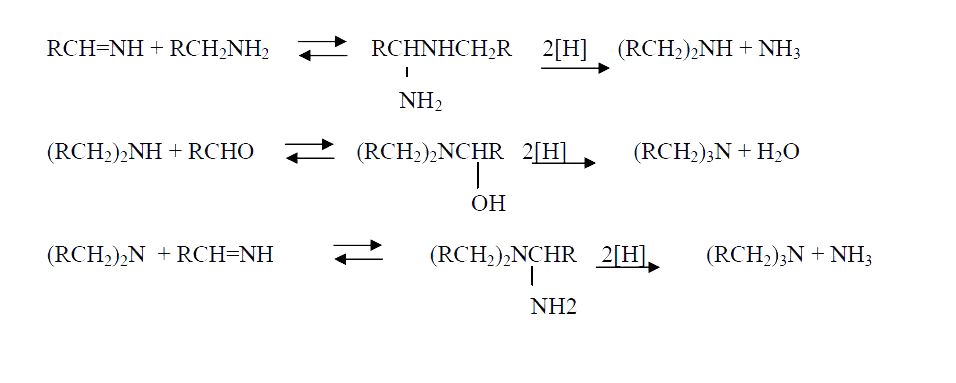
Similar reactions may occur when the carbonyl compound employed is a ketone.
(source: Emerson, W. S. (2011). The Preparation of Amines by Reductive Alkylation. Organic Reactions, 174–255. doi:10.1002/0471264180.or004.03 )
Ethanal on reaction with ammonia forms an imine (X) which on reaction with nascent hydrogen gives (Y). Identify ‘X’ and ‘Y’.AX is CH3CH=NH and Y is CH3NH2BX is CH3CHOHNH2 and Y is CH3CH2NH2CX is CH3CHOHNH2 and Y is CH3NH2DX is CH3CH=NH and Y is CH3CH2NH2After having celebrated his brother’s birthday, Max makes his way to Fuchsia city, to take a boat to Cinnabar Island. The sailor, Mr. Hendricks, is however in a dilemma. There is a castle in the middle of the sea on the way to Cinnabar Is land. Owing to issues, he needs to bribe each and every soldier with 10 PokéDollars to pass through. He is not sure of the number of soldiers in the main towers due to the new rules that have been imposed. He seeks Max’s help. In the castle, there are passways as straight row and column (passways are the dark grey strips) at any point when you see left or right or up or down . Also there are some magical tunnels joining one stop (stops are the places where troops of soldiers stand) to the other in a non-straight manner. The magic of the tunnel is clon- ing the soldiers. If you place any number of soldiers in one stop, then all stops joined to it through the tunnel will have same number of cloned soldiers. Cloned soldiers can also be cloned if there is one more. Number of soldiers at any stop in any row or column are more than one and sum of all soldiers at all stops in any row or column is same. Every stop is marked a number from 1 to 6 and stops in any row or column have different numbers. Soldier troop with ‘x’ number of soldier will stand on the stop marked as ‘x’. There are some soldier having all time duty and they are depicted in the figure with their positions. But fearing for safety, the king increased the security and ordered to place a soldier on every stop in the above way of his convenience. The circle in the middle represents the main tower and Max has to find the number of extra soldiers. The answer is ________
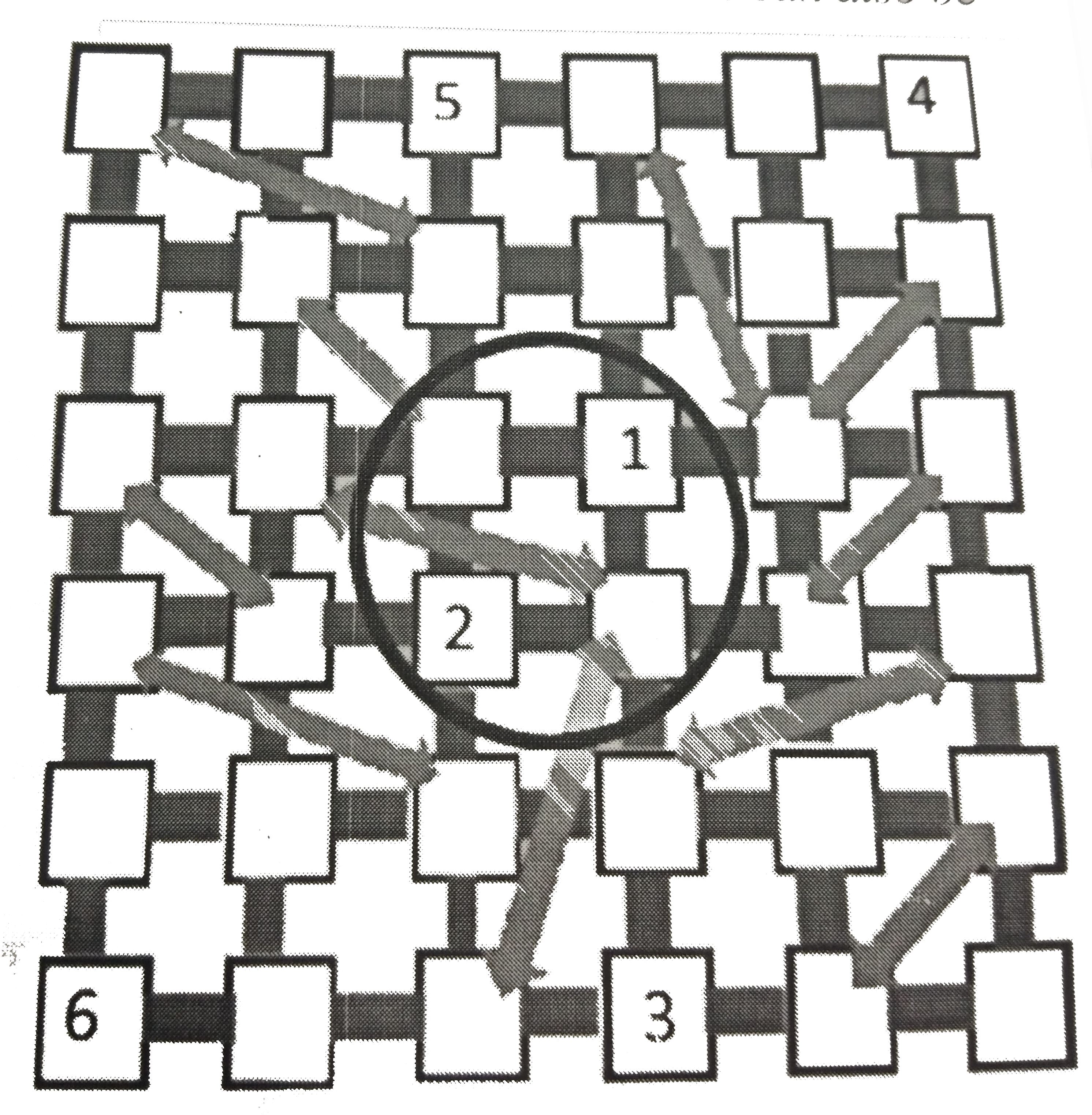 A62B64C66D68
A62B64C66D68India generates at least 25,940 tonnes of plastic waste daily, equivalent to the weight of around 4,300 elephants. Of this, about 60% gets recycled, according to the Union environment ministry. The rest gets dumped in landfills, clogs drains, goes into the ocean as micro-plastics, or is burnt, leading to air pollution. In the absence of a proper waste management system, the plastics that get recycled are often dirty, which makes the re-cycling process water-intensive and expensive. “It is the process of cleaning the plastics before recycling that makes it resource intensive. A lot of water is required to wash the collected plastics, especially if it is oily or greasy as it has to be cleaned with a solvent,” said Dr Suneel Pandey, director of environment and waste management, The Energy and Resources Institute (TERI. Experts say proper waste collection and management is at the core of ensuring more plastics get recycled instead of ending up in landfills and oceans. Researchers from various institutes have come up with innovative ways to utilise the plastic waste that cannot be recycled further or are unrecyclable. At IIT Delhi, a group of chemical engineers are working on chemically breaking down plastics to its smaller hydrocarbon molecules and then synthesising diesel out of it. The process uses packaging material, Polyethylene terephthalate (PET bottles, polystyrene, and multi-layer packaging. The fuel produced can currently be used as a blend in stationary diesel machines like generators and needs further testing and standardisation to be used as commercial diesel in vehicles. A mix of plastic and stone has been used to create a block that can be used in flooring. A CSIR laboratory also used shredded plastics, chemically treated it and mixed with fillers to make tiles. A German chemical producer called BASF is also breaking down waste plastic and using it as raw material for chemicals, instead of using material derived from fossil fuels. One cost-effective solution was developed by Dr Rajagopalan Vasudevan, professor at Thiagarajar College of Engineering in Madurai. The National Highways Authority of India is currently scaling up his technology to use plastic waste in making roads. He came up with the idea of mixing plastic waste with Bitumen used for constructing roads in 2001. “That year the Tamil Nadu government had planned to ban plastic and my concern began with the more than 1 lakh people employed by the industry. Since plastic is derived from petroleum just like Bitumen, I thought of using it for road construction. The result, not only plastic waste was getting utilised, the roads were cheaper and steadier,” he said. The plastic waste does not have to be segregated and even multilayered plastics can be used in the mix. “All we need to do is collect the waste, dry it out and use it,” he said. The construction of every kilometre of road required nine tonnes of Bitumen and one tonne of plastic waste. This means for every kilometre of road, one-tonne Bitumen is saved, which costs about ₹30,000.
What has been developed by Dr Rajagopalan Vasudevan, professor at Thiagarajar College of Engineering in Madurai?Amethod for using plastic for road constructionBmethod for using plastic to make tiles and blocksCmethod for extracting raw material for chemicalsDmethod for making diesel from plastic waste
The existence of negatively charged particle in an atom was shown by J.J. Thomson as a result of the studies of the passage of electricity through gases at extremely low pressure known as discharge tube experiments. When a high voltage of the order of 10,000 volts or more was impressed across the electrodes, some sort of invisible rays moved from the negative electrode to the positive electrode these rays are called as cathode rays.
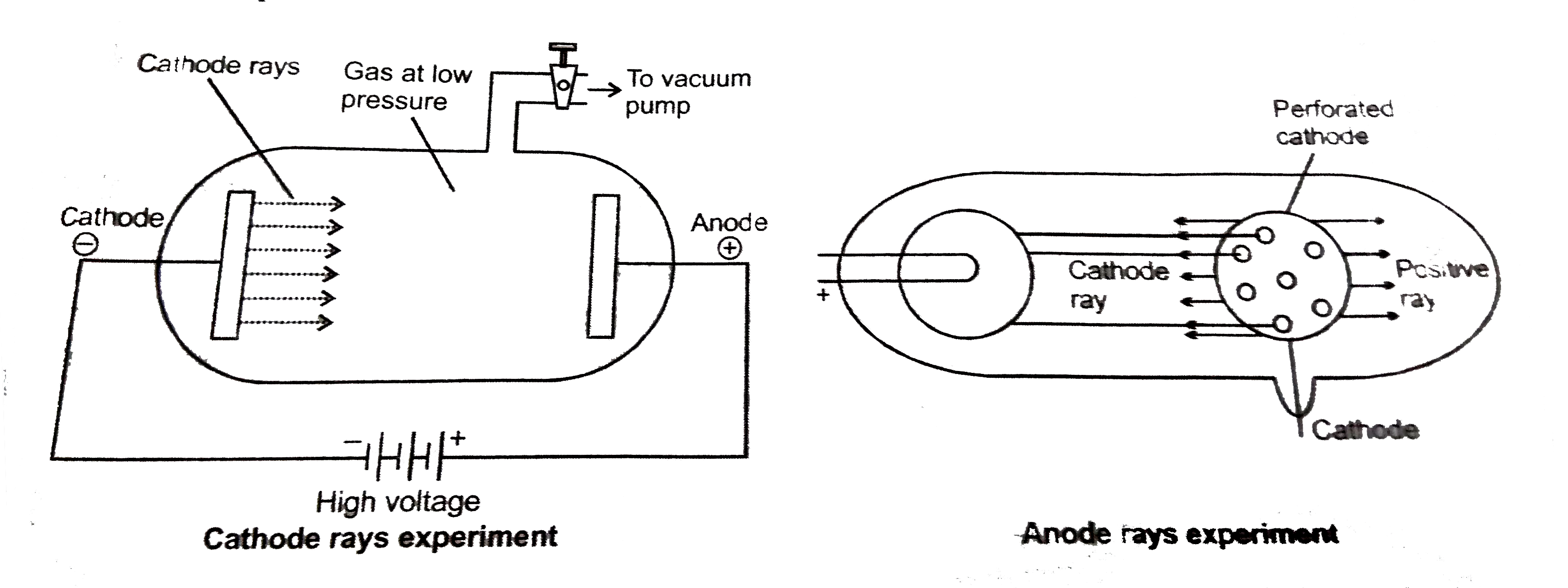
Cathode rays travel in straight path in absence of electrical and magnetic field . Cathode rays consist of material part and charged particles? Cathode rays produce X-rays and light is emitted when they strike on ZnS screen. Cathode rays penetrate through thin sheets of aluminium and other metals . They affect the photogenic plate and passes heating effect when they strike on metal foil. The raito of charge to mass i.e charge/mass is same for all the cathode rays irrespective of the gas used in the tube.
The existence of positively charged particle in an atom was shown be E. Goldstein. He repeated the same discharge tube experiments by using a perforated cathode. It was observed that when a high potential difference was applied between the electrodes, not only cathode rays were produced but also a new type of rays were produced simultaneoulsy from anode moving towards cathode and passes through the holes or canal of the cathode. These termed as canal rays or anode rays.
These rays travel in straight lines and consists of positively charged particles. These rays have kinetic energy and produces heating effect also. The e/m ratio of these rays is smaller than that of electrons. Unlike cathode rays, their e/m value is dependent upon the nature of the gas taken in the tube. These rays produced flashes of light on ZnS screen and can pass throughs thin metal foils. They can produce physical and chemical changes and are capable to produce ionisation in gases.
For cathode rays the value of e/m:
View SolutionThe existence of negatively charged particle in an atom was shown by J.J. Thomson as a result of the studies of the passage of electricity through gases at extremely low pressure known as discharge tube experiments. When a high voltage of the order of 10,000 volts or more was impressed across the electrodes, some sort of invisible rays moved from the negative electrode to the positive electrode these rays are called as cathode rays.

Cathode rays travel in straight path in absence of electrical and magnetic field . Cathode rays consist of material part and charged particles? Cathode rays produce X-rays and light is emitted when they strike on ZnS screen. Cathode rays penetrate through thin sheets of aluminium and other metals . They affect the photogenic plate and passes heating effect when they strike on metal foil. The raito of charge to mass i.e charge/mass is same for all the cathode rays irrespective of the gas used in the tube.
The existence of positively charged particle in an atom was shown be E. Goldstein. He repeated the same discharge tube experiments by using a perforated cathode. It was observed that when a high potential difference was applied between the electrodes, not only cathode rays were produced but also a new type of rays were produced simultaneoulsy from anode moving towards cathode and passes through the holes or canal of the cathode. These termed as canal rays or anode rays.
These rays travel in straight lines and consists of positively charged particles. These rays have kinetic energy and produces heating effect also. The e/m ratio of these rays is smaller than that of electrons. Unlike cathode rays, their e/m value is dependent upon the nature of the gas taken in the tube. These rays produced flashes of light on ZnS screen and can pass throughs thin metal foils. They can produce physical and chemical changes and are capable to produce ionisation in gases.
Which is not true with respect to cathode rays?
View SolutionThe existence of negatively charged particle in an atom was shown by J.J. Thomson as a result of the studies of the passage of electricity through gases at extremely low pressure known as discharge tube experiments. When a high voltage of the order of 10,000 volts or more was impressed across the electrodes, some sort of invisible rays moved from the negative electrode to the positive electrode these rays are called as cathode rays.
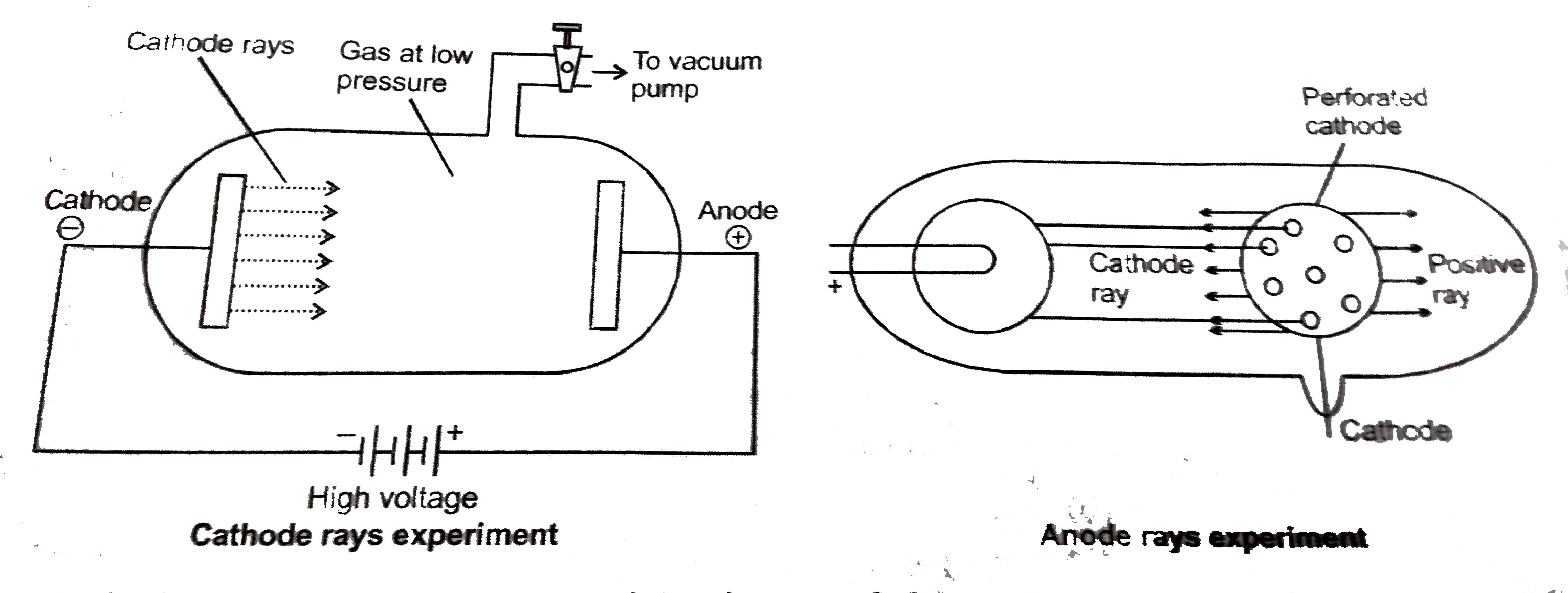
Cathode rays travel in straight path in absence of electrical and magnetic field . Cathode rays consist of material part and charged particles? Cathode rays produce X-rays and light is emitted when they strike on ZnS screen. Cathode rays penetrate through thin sheets of aluminium and other metals . They affect the photogenic plate and passes heating effect when they strike on metal foil. The raito of charge to mass i.e charge/mass is same for all the cathode rays irrespective of the gas used in the tube.
The existence of positively charged particle in an atom was shown be E. Goldstein. He repeated the same discharge tube experiments by using a perforated cathode. It was observed that when a high potential difference was applied between the electrodes, not only cathode rays were produced but also a new type of rays were produced simultaneoulsy from anode moving towards cathode and passes through the holes or canal of the cathode. These termed as canal rays or anode rays.
These rays travel in straight lines and consists of positively charged particles. These rays have kinetic energy and produces heating effect also. The e/m ratio of these rays is smaller than that of electrons. Unlike cathode rays, their e/m value is dependent upon the nature of the gas taken in the tube. These rays produced flashes of light on ZnS screen and can pass throughs thin metal foils. They can produce physical and chemical changes and are capable to produce ionisation in gases.
Select the incorrect statement.
View SolutionThe existence of negatively charged particle in an atom was shown by J.J. Thomson as a result of the studies of the passage of electricity through gases at extremely low pressure known as discharge tube experiments. When a high voltage of the order of 10,000 volts or more was impressed across the electrodes, some sort of invisible rays moved from the negative electrode to the positive electrode these rays are called as cathode rays.

Cathode rays travel in straight path in absence of electrical and magnetic field . Cathode rays consist of material part and charged particles? Cathode rays produce X-rays and light is emitted when they strike on ZnS screen. Cathode rays penetrate through thin sheets of aluminium and other metals . They affect the photogenic plate and passes heating effect when they strike on metal foil. The raito of charge to mass i.e charge/mass is same for all the cathode rays irrespective of the gas used in the tube.
The existence of positively charged particle in an atom was shown be E. Goldstein. He repeated the same discharge tube experiments by using a perforated cathode. It was observed that when a high potential difference was applied between the electrodes, not only cathode rays were produced but also a new type of rays were produced simultaneoulsy from anode moving towards cathode and passes through the holes or canal of the cathode. These termed as canal rays or anode rays.
These rays travel in straight lines and consists of positively charged particles. These rays have kinetic energy and produces heating effect also. The e/m ratio of these rays is smaller than that of electrons. Unlike cathode rays, their e/m value is dependent upon the nature of the gas taken in the tube. These rays produced flashes of light on ZnS screen and can pass throughs thin metal foils. They can produce physical and chemical changes and are capable to produce ionisation in gases.
Select the incorrect statement.
View SolutionThe existence of negatively charged particle in an atom was shown by J.J. Thomson as a result of the studies of the passage of electricity through gases at extremely low pressure known as discharge tube experiments. When a high voltage of the order of 10,000 volts or more was impressed across the electrodes, some sort of invisible rays moved from the negative electrode to the positive electrode these rays are called as cathode rays.

Cathode rays travel in straight path in absence of electrical and magnetic field . Cathode rays consist of material part and charged particles? Cathode rays produce X-rays and light is emitted when they strike on ZnS screen. Cathode rays penetrate through thin sheets of aluminium and other metals . They affect the photogenic plate and passes heating effect when they strike on metal foil. The raito of charge to mass i.e charge/mass is same for all the cathode rays irrespective of the gas used in the tube.
The existence of positively charged particle in an atom was shown be E. Goldstein. He repeated the same discharge tube experiments by using a perforated cathode. It was observed that when a high potential difference was applied between the electrodes, not only cathode rays were produced but also a new type of rays were produced simultaneoulsy from anode moving towards cathode and passes through the holes or canal of the cathode. These termed as canal rays or anode rays.
These rays travel in straight lines and consists of positively charged particles. These rays have kinetic energy and produces heating effect also. The e/m ratio of these rays is smaller than that of electrons. Unlike cathode rays, their e/m value is dependent upon the nature of the gas taken in the tube. These rays produced flashes of light on ZnS screen and can pass throughs thin metal foils. They can produce physical and chemical changes and are capable to produce ionisation in gases.
For cathode rays the value of e/m:
View Solution
